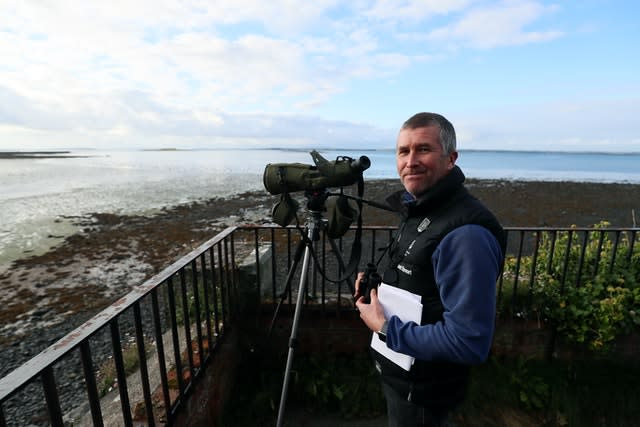Migrating geese counted as they arrive in search of Strangford ‘superfood’
The complex and often infuriating task of counting tens of thousands of migrating geese has taken place at their favourite autumn stop off.
Up to 90% of the global population of Canadian light bellied Brent geese arrive on Strangford Lough in Co Down every year.
The abundance of their favourite superfood – eelgrass – on the mud flats of the lough is believed to be the reason for Strangford’s enduring popularity with its seasonal visitor.
National Trust staff were on the go from just after dawn on Friday in an effort to tally up how many geese have made the trans-Atlantic trip this time. It is usually anywhere between 20,000 and 30,000.
Counters were based at strategic points on the shores of the largest sea inlet in the UK and Ireland for the concentration-sapping endeavour.

Andrew Upton, a countryside manager with the National Trust, had already counted more than 3,500 before 10am from a secluded spot near the trust’s Mount Stewart estate.
He told the PA news agency: “The birds breed up in Arctic Canada and then their migration takes them through Greenland and Iceland and then virtually the whole population then arrive on Strangford Lough each autumn.
“There’s a plant that grows here called Zostera, or ‘eelgrass’, and it’s a really important food for them, it’s a superfood.

“When the birds arrive they’re very hungry, they’ve undertaken that long migration and have lost a lot of body weight and they really need to feed up to survive the winter.
“So they’ll feed and feed and exhaust that source through and then they’ll move on from Strangford Lough, although we do have maybe about 10,000 birds that will stay the winter.
“But the other birds will then move right across the island of Ireland and some birds will also get down to France and Spain.”
Mr Upton encouraged people to stop off at car parks along the shores of Strangford Lough to catch a glimpse of the geese while they are there in such high numbers.
“It’s one of the wildlife spectaculars of Northern Ireland,” he said.
Mr Upton acknowledged it is not always easy to count birds that do not tend to stay still for long.

“It’s a bit of a nuisance, shall we say,” he said.
“You’re trying to count individual birds if you can. If you can’t, then you count in multiples of maybe five or 10 or 50, depending on the numbers of birds. You’re getting as accurate a count as possible.
“But earlier we had a small plane come across and a lot of birds flew up.
“Thankfully, they all settled back down, but things like that can be really annoying.”

 Yahoo Finance
Yahoo Finance 